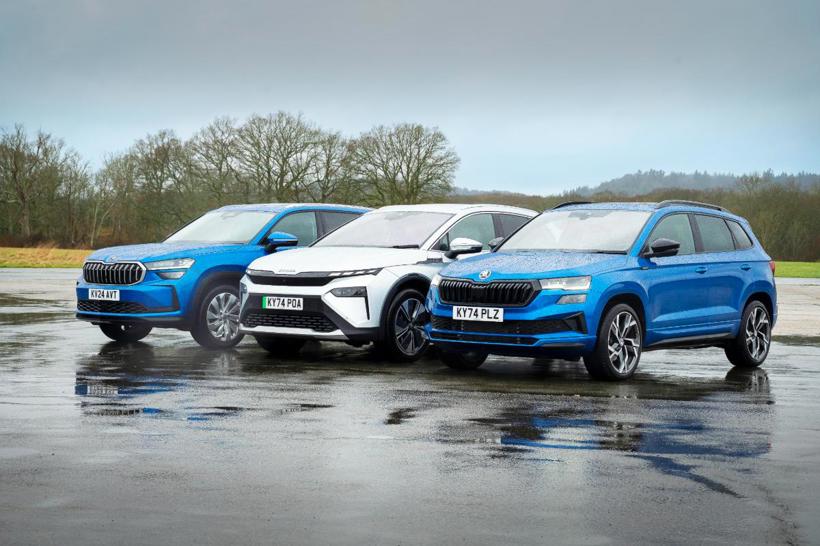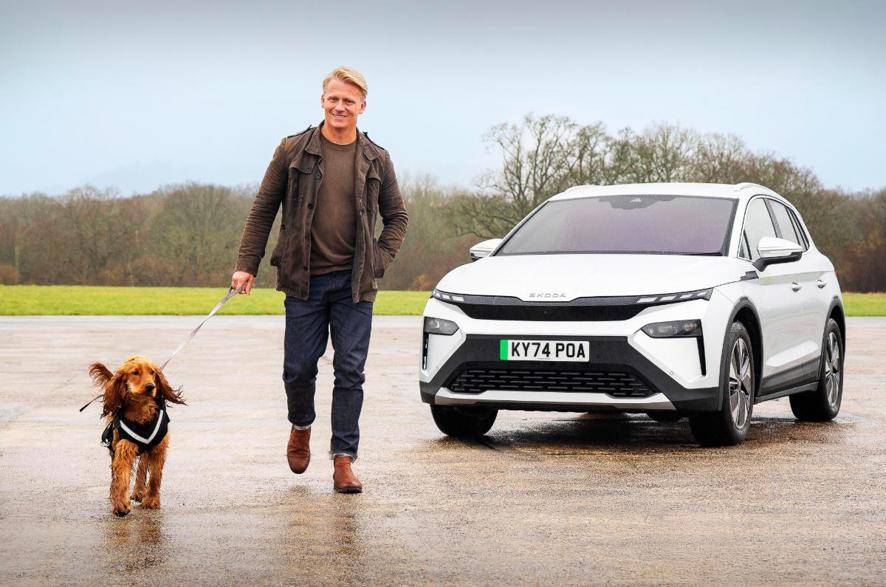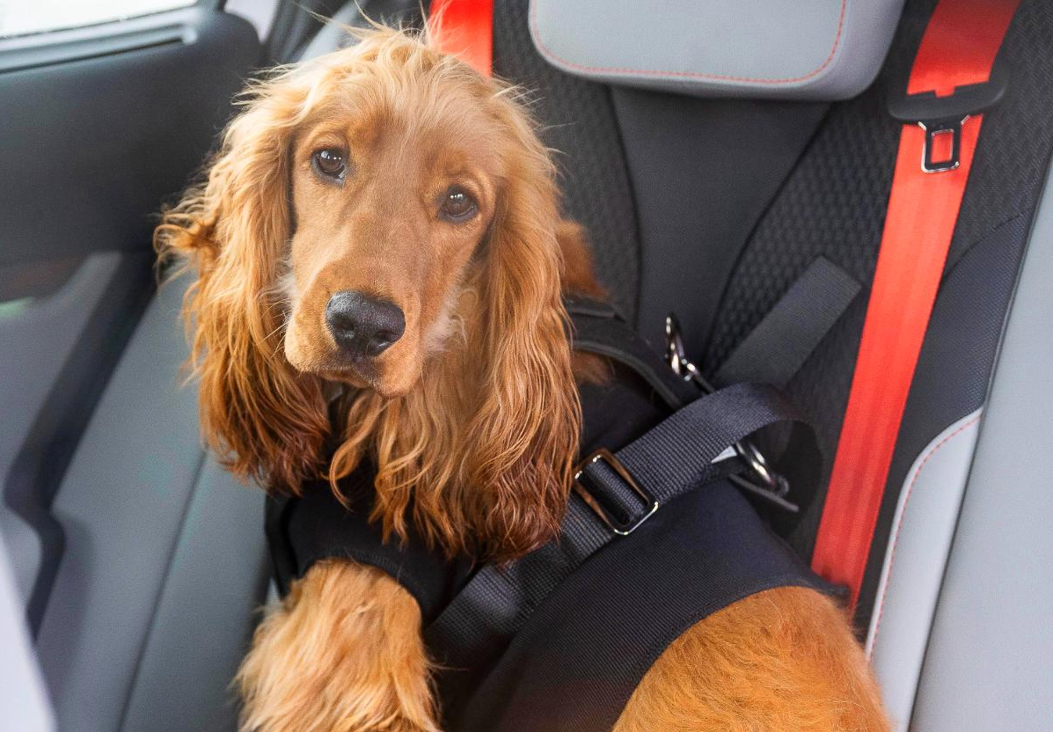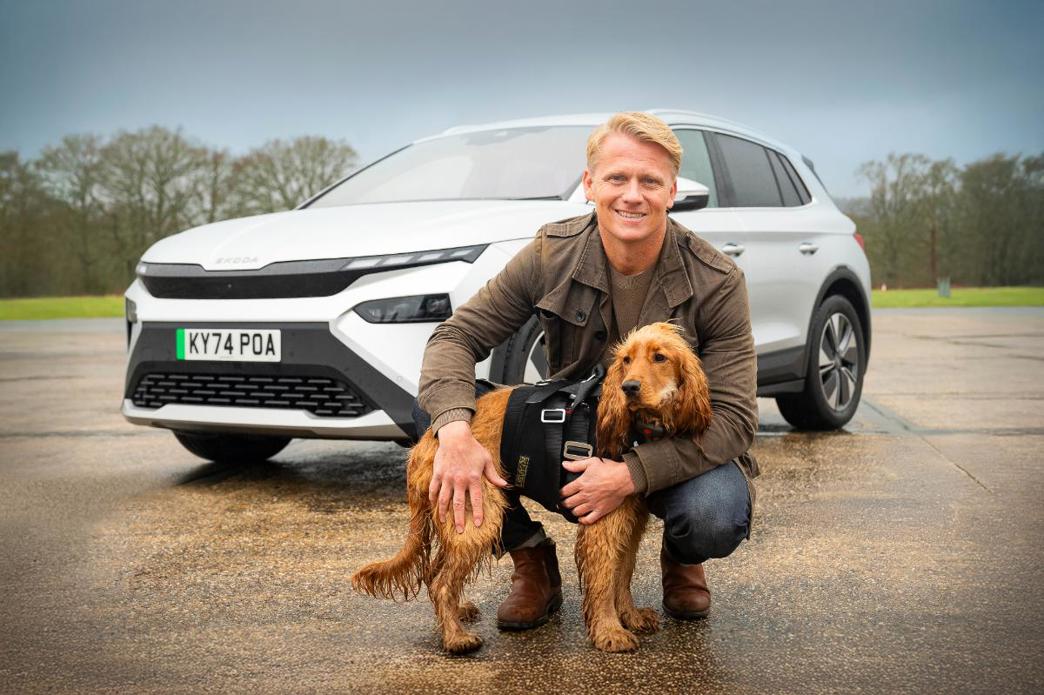Dogs love cars (well, most do) and largely for the same reasons we do - the feeling of speed, thrill of going for a trip somewhere new, sticking your head out the window and feeling the wind in your face as your tongue flaps against the side of your head and you drool all down the window... Okay, maybe that last bit is more just for dogs, but you get the idea; dogs love cars.
But not all dogs, it has to be said. Like some people, some (let's face it; weird) dogs aren't really into the whole stick your head out the window and let your tongue fly in the wind thing, and don't actually feel all that relaxed in cars.

So what do you do about that? Well, according to the results of a new study from Skoda, you should probably buy an EV.
A new study backed by the VW Group company saw UK veterinary surgeon, dog expert and celebrity TV vet Dr Scott Miller monitoring a dog’s heart rate when travelling in three cars with different fuel types – electric, diesel and petrol.

A one year-old Cocker Spaniel called Mango was driven around the former Top Gear test track in three different Škoda models an all-electric Elroq, a diesel Kodiaq and a petrol Karoq. Reaching speeds of up to 70mph (113km/h), Mango’s behaviour was monitored during each drive and his pulse rate checked after each journey, with noticeable results.
Mango’s resting heart rate of 80 beats per minute (BPM) only rose to 100 BPM in the EV, while it surged to 120 BPM and 125 BPM in the petrol and diesel Skodas respectively, indicating higher stress levels.
Miller said that Mango appeared to be more relaxed in the Elroq, lying down and almost falling asleep during the drive. In the fuel-powered cars he was more distracted and less settled.

"The experiment clearly shows the health and psychological benefits of travelling in an EV for dogs, said Miller.
"Observing Mango’s reactions while travelling at the same speed on the same track, but in different vehicles, made it clear that the EV provided a smoother and more calming experience.
"The quiet mechanics, absence of gear changes, and the spacious interiors of electric cars create a soothing environment for dogs, ensuring a more relaxed and happy travel experience for our furry companions."

Dog Behaviourist Anna Webb said that Mango's body language telegraphed his preference for all-electric travel.
"It clearly showed his preference for travelling in an EV where he’s lying down on the back seat, relaxed, with soft semi-closed brown eyes," she said.
"Whereas in the traditional fuel powered cars, he’s sitting bolt upright and tense. Turning his head dramatically with rapid wide eye movement, showing the whites of his eyes - all clear physical signs of stress."

Webb also noted that Mango’s increase in heart rate (80 BPM resting, 100 in an EV, 120 in the petrol ICE and 125 in the diesel) also showed that his adrenalin/stress levels were physiologically higher in the traditional vehicles.
A previous study by the University of Lincoln in the UK, in partnership with British car sales website CarGurus, showed similar results using more dogs (20 of them), but less vehicles (only EV and diesel were compared), with a heart rate reduction of around 30 percent when travelling in an EV compared to a diesel car.
However, it should be noted that if your dog has a tendency to get a bit vomit-y on the move, then an EV still might not be the perfect solution for eliminating motion sickness. This is because, while the noise and vibrations from an ICE vehicle that can increase a dog's heart rate and trigger motion sickness may be absent in an EV, the deceleration induced by their regenerative braking systems are usually low frequency which is considered "typical of a sickness-inducing motion force."
Regardless of your choice in motivation power though, there are a number of things you should be aware of when taking your pooch for a ride:
- From your dog’s perspective, a car is a closed space (without an escape route), which can stress some dogs, so associate the car with positive sensory experiences. Play the radio or a playlist, like Happy Hounds on Spotify, (a playlist created by Webb for Skoda), outside of the car as well as inside to use ‘sound therapy’ to familiarise your dog with their environment.
- If you notice signs of stress through physical signals like drooling, panting, chewing their paws, licking or chewing the carrier/seat belt, or vocalising including whining, howling, barking, and heavy panting, you should pull over so your pooch can take a breath of fresh air, stretch their legs, have a drink and receive positive attention to feel refreshed for the next leg of the trip.
- Your dog’s hearing is four times more acute than yours, and they hear both high and low frequencies that are inaudible to people, so be mindful of engine noises, other vehicles, heavy rain and keep your radio or playlist at a low level.
- While the vibrations from traditional cars can trigger motion sickness and feeling nauseous, a dog’s super-sensitive sniffer (which is over a million times more acute than ours) means smells can also trigger motion sickness in them. Drive smoothly and ventilate your vehicle appropriately.
- Scientific research has shown that dogs can smell cortisol (the stress hormone) rising in their owners, making dogs feel pessimistic. So keep a lid on your stress to help keep your dog feeling calm and optimistic.
- A dog's body temperature is two degrees higher than ours, so even in winter, a temperature that is comfortable for you may well be less comfortable for them. Always ensure the back seat remains under 20 degrees centigrade and carry a bottle of water with you.














